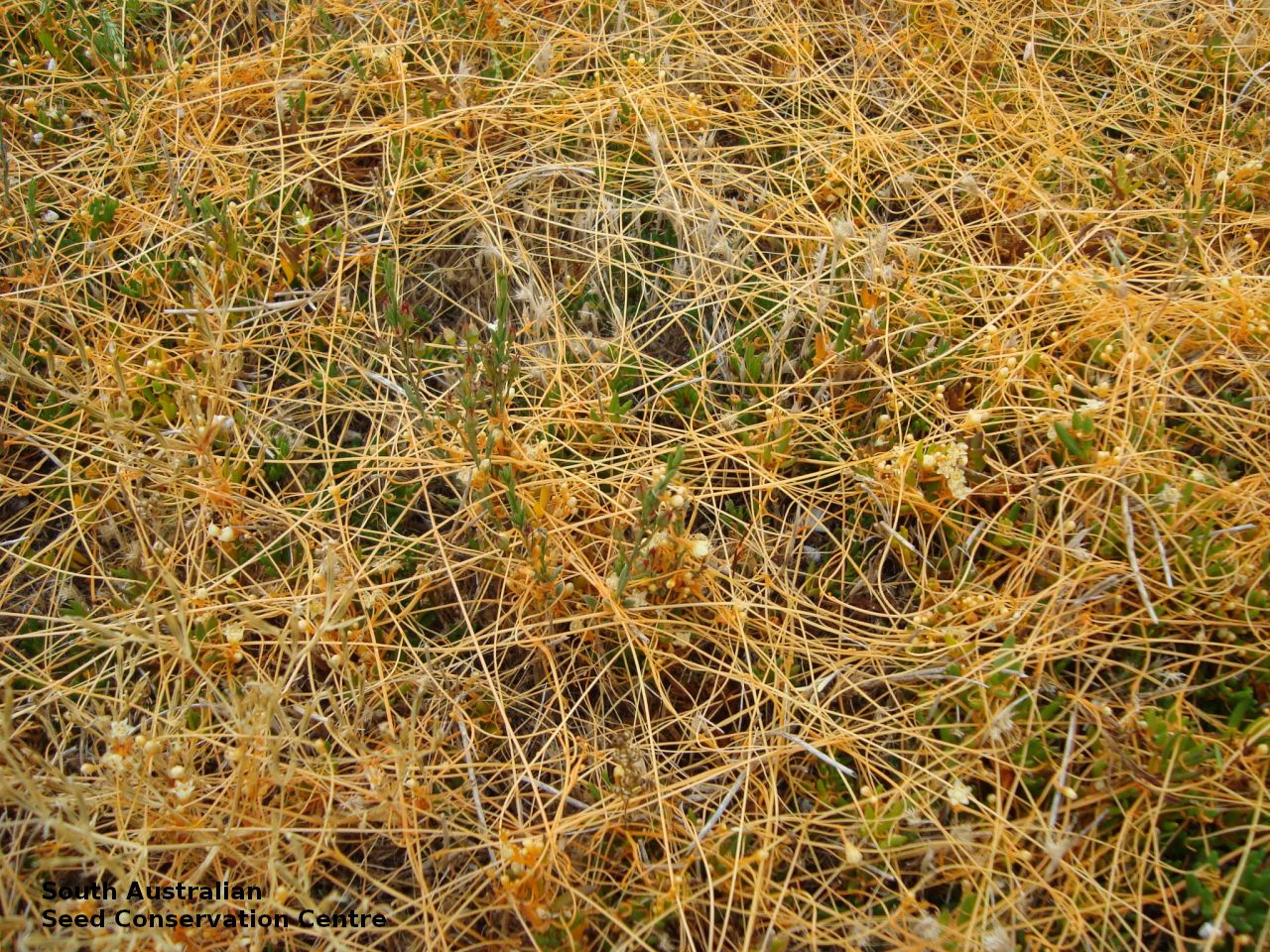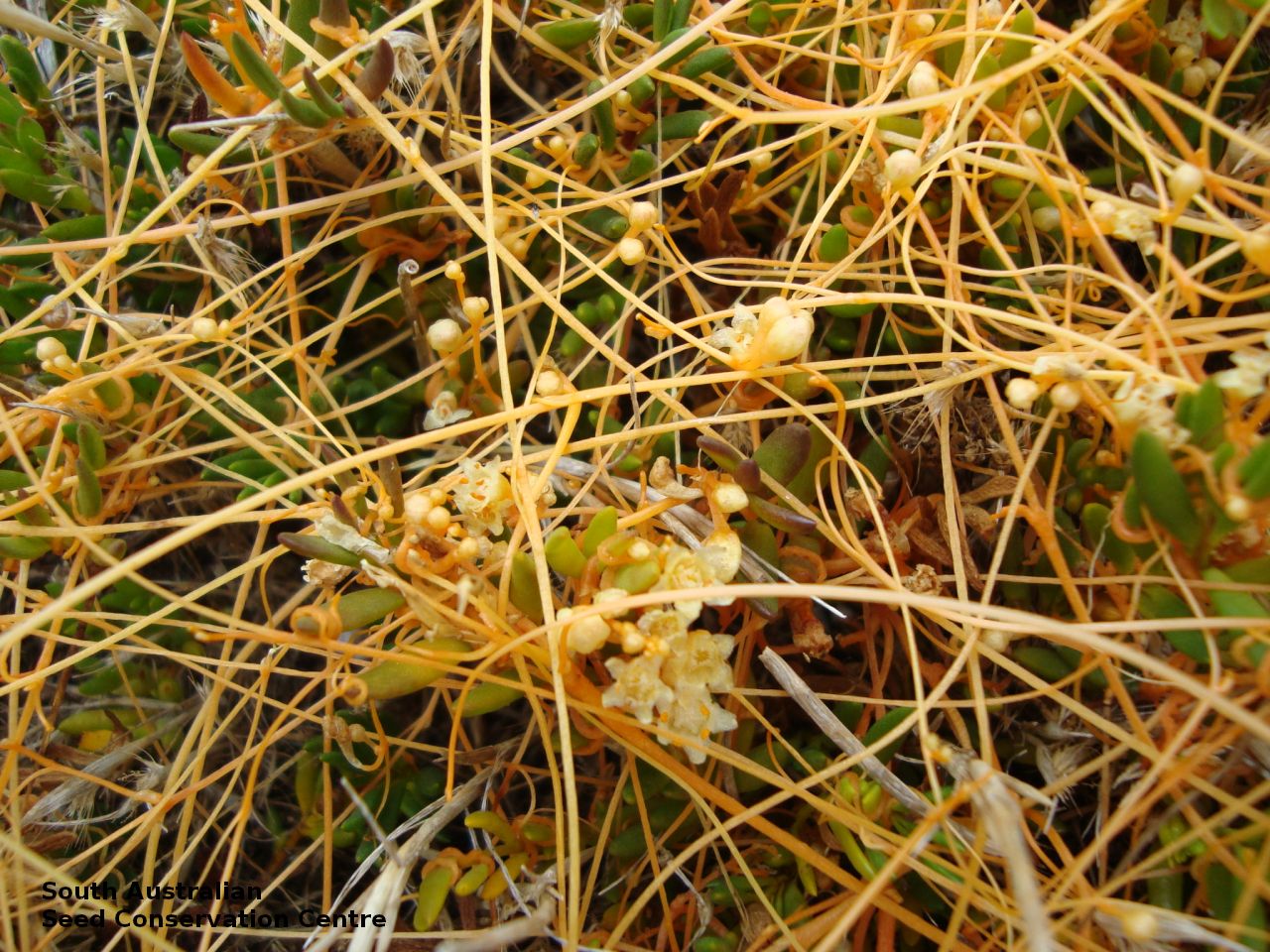




Prior names
Cuscuta tasmanica var. brevistyla
Common names
Golden Dodder
Tasmanian Dodder
Etymology
Cuscuta from the Italian and Neo-Latin 'cuscuta', which is from the Arabic 'kushuta' meaning to bend; referring to the twining habit of the stem. Tasmanica of or from Tasmania; referring to where the type specimen was collected from.
Distribution and status
Only found in the South-east in South Australia around Salt Creek and Beachport, growing around saline areas and brackish marshes where usually parasitic on species of Wilsonia and Chenopodiaceae. Native. Very rare in South Australia. Rare in Tasmania. Common in the other states.
Herbarium region: South Eastern
NRM region: South East
AVH map: SA distribution map (external link)
Plant description
Annual, parasitic plant with yellow or red thread-like stems, twining and attached to the host plant. Once attached to a host, the stem decays near the base and severs connection to the root. Leaves reduced to small scales. Inflorescent in clusters of 2-5 golden yellow flowers. Flowering between December and May. Fruits are orange depressed-globular capsule to 3.8 mm diameter. Seed embryo type is folded.
Seed collection and propagation
Collect seeds between January and June. Collect capsules that are maturing, turning brown and contain hard seeds inside. Place the capsules in a tray and leave to dry for one to two weeks. Then rub the capsules gently by hand or with a rubber bung to dislodge the seeds. Use a sieve to separate the unwanted material. Store the seeds with a desiccant such as dried silica beads or dry rice, in an air tight container in a cool and dry place.